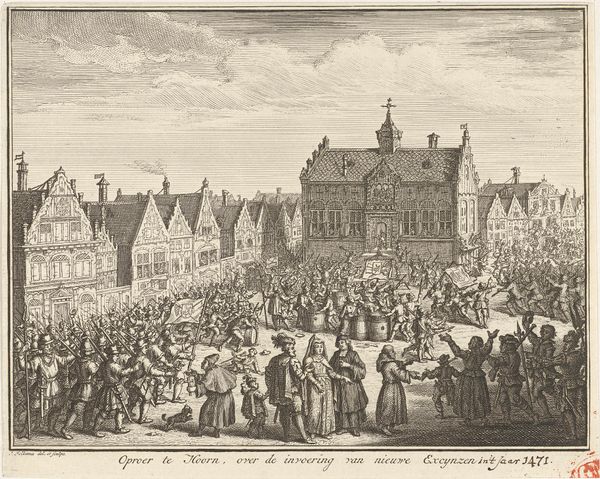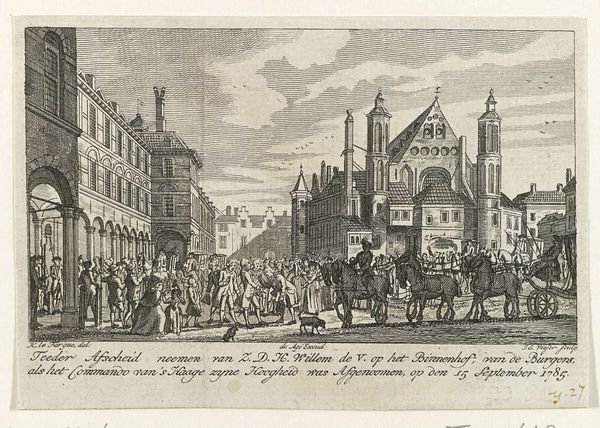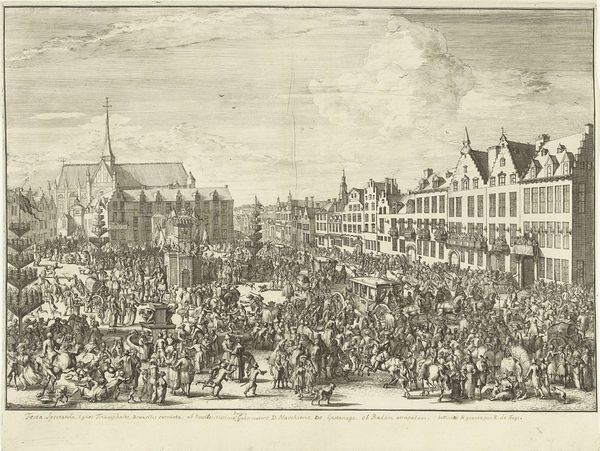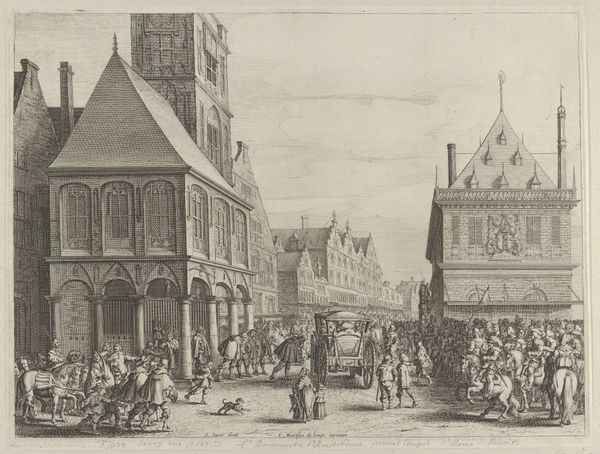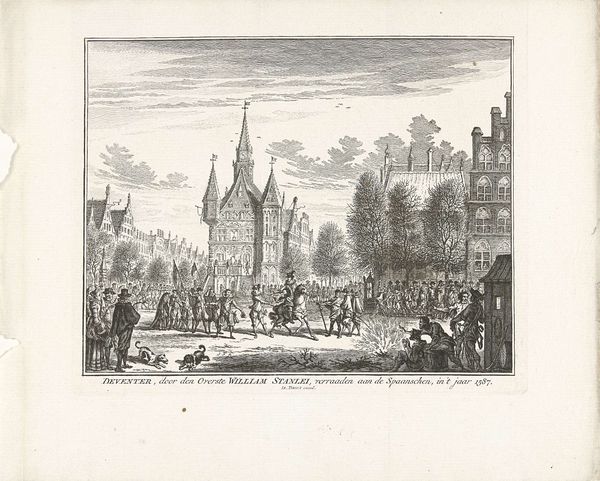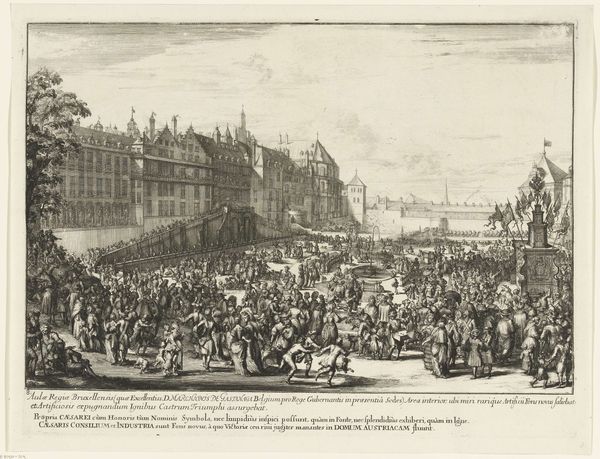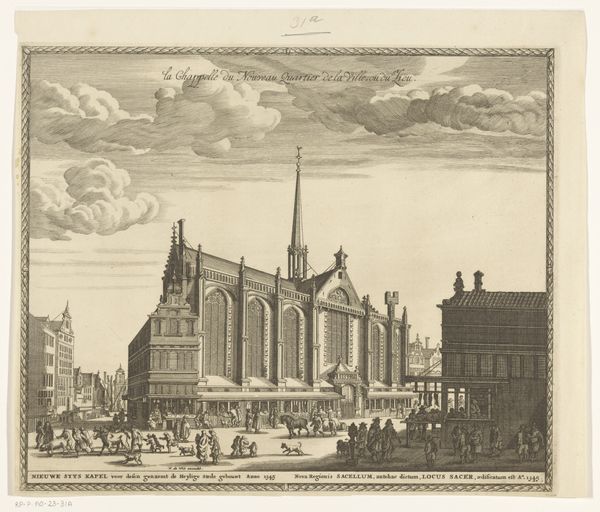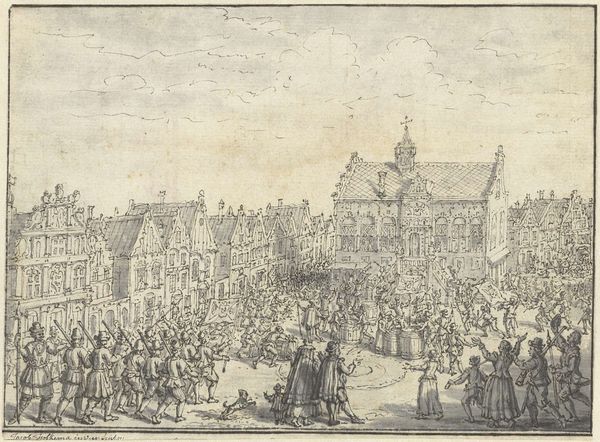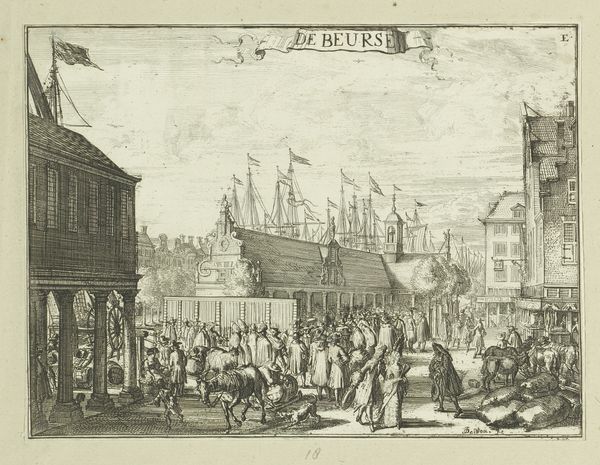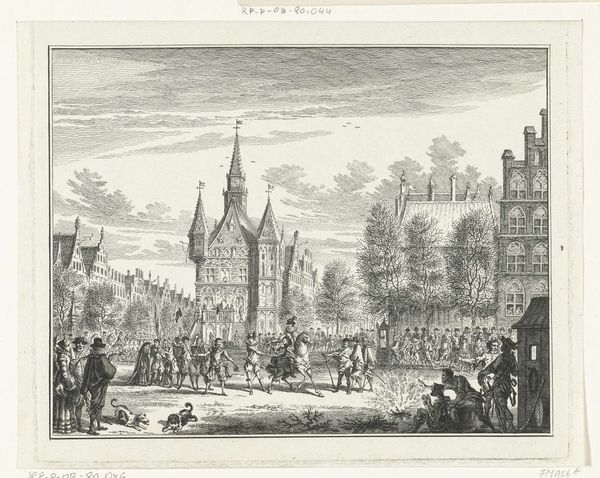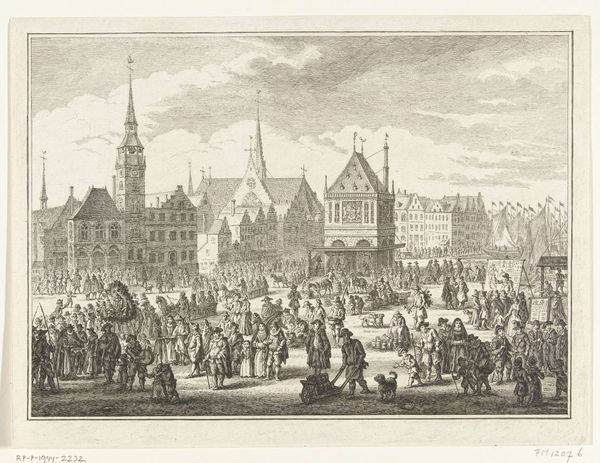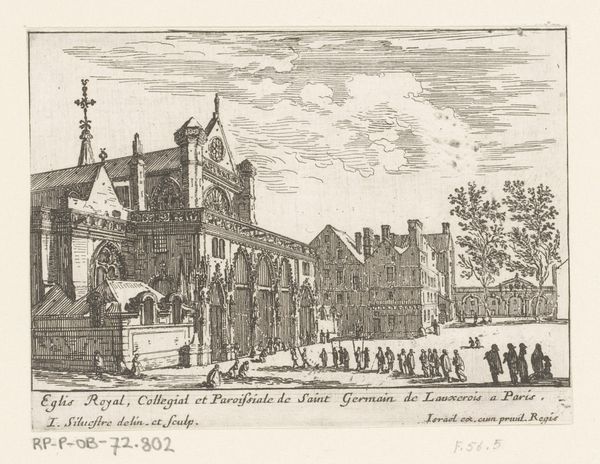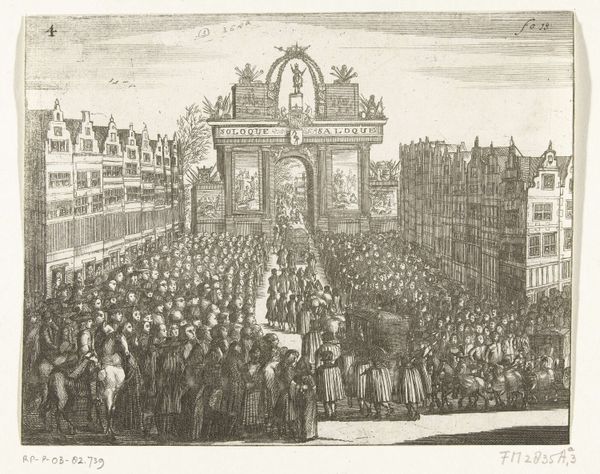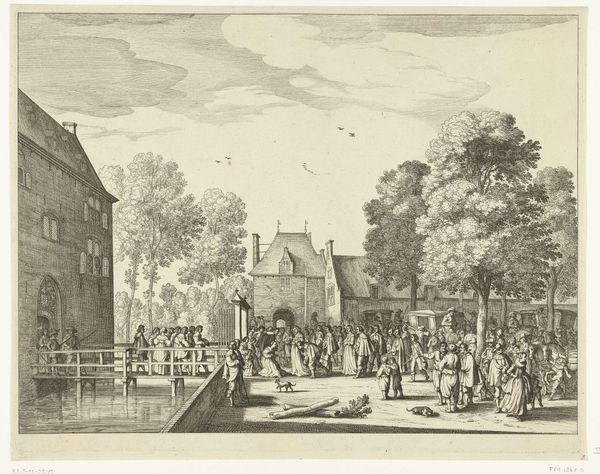
drawing, print, etching, ink
#
drawing
#
baroque
#
pen drawing
# print
#
etching
#
ink
#
cityscape
#
history-painting
Dimensions: height 393 mm, width 555 mm
Copyright: Rijks Museum: Open Domain
Curator: Looking at this teeming city scene, I immediately sense a mix of celebration and underlying unease. What do you think? Editor: You’re right, there's an ambiguous mood at play here. This etching, rendered in ink, is titled "The Entrance of Leopold I into Brussels," created between 1686 and 1687 by Romeyn de Hooghe. It depicts a significant political moment in the history of Brussels. Curator: Political spectacle as propaganda! The composition emphasizes Leopold's arrival as a momentous event, the cathedral acting almost as a theatrical backdrop for this carefully orchestrated scene. Editor: Yes, look at the placement of the figures and objects – each carries a symbolic weight. The carriage containing Leopold, while not centrally located, becomes a focal point as the crowd gestures and turns toward it. The church looming behind reinforces the authority implied. Curator: Absolutely. Notice the city itself—its architecture serves as a potent symbol of power. De Hooghe is a master of conveying the idea of the city as a stage for these displays of power. This piece says less about Leopold and more about solidifying Brussels as a burgeoning cultural and political power. Editor: And beyond the general enthusiasm depicted, notice those scattered plumes of smoke. Perhaps cannon fire, or even fireworks, which amplify this spectacle with symbolic dimensions of warfare, but in this instance deployed for a message of strength and prosperity? Curator: Right. Consider, too, that public events like royal entrances were not just about showing off power, they also helped cement collective identity and create narratives around leadership. The fact that it was immortalized through print meant its influence spread even further. Editor: These visual records often outlive the events themselves, shaping collective memory. It becomes crucial to see how such visual accounts may glorify or exaggerate particular details. What we see in this print isn't necessarily what transpired on the street. Curator: This piece prompts me to reflect on how art can be an active agent in shaping and justifying the socio-political landscape. It serves as an interesting reflection on Brussels and its role during that specific moment. Editor: For me, I can see echoes of civic pride woven into this picture, the lasting reminder that a specific selection of events become iconic and the cornerstone to a shared vision.
Comments
No comments
Be the first to comment and join the conversation on the ultimate creative platform.
